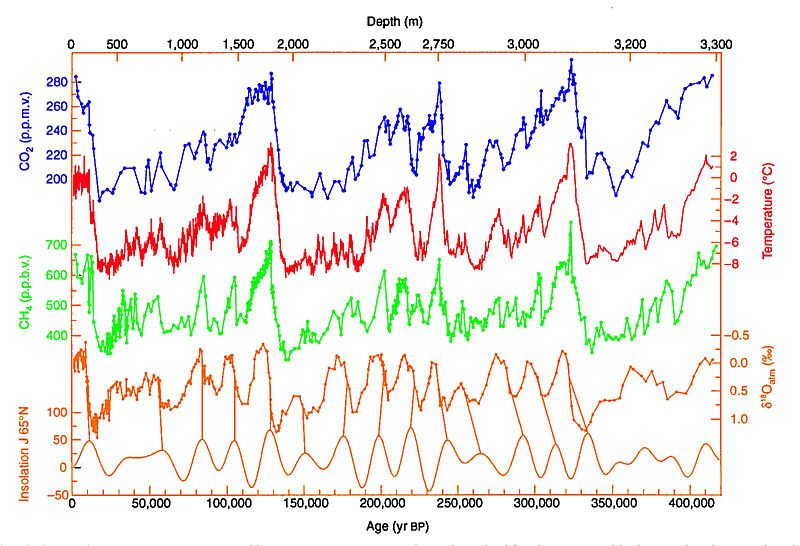By 2017, world annual carbon dioxide emissions in the atmosphere had risen to a level exceeding 36 billion tons; a rise of 34 billion tons CO2 since 1900.1 Annual global contribution of CO2 in 1900 was 2 billion tons. Accumulated emissions of CO2 in the atmosphere have exceeded 1.5 trillion tons since 1751.1 (This according to information on the Our World In Data site, which may be accessed here).
Remember, accelerated industrialization since 1751 along with the growth in population is what is responsible.
It isn’t just that the world’s air and major bodies of water (in the form of increased acidification and in other ways) are feeling the impact; so too is what is referred to as the mean or average global surface temperature. Global mean surface temperature today is around 1 degree Celsius above that during pre-industrial times.1
The world’s largest emitters of carbon dioxide on an annual basis are the United States, the European Union (EU-28), China, Europe (other) and Asia and Pacific (other).1
But, it wasn’t always this way. Historically, and interestingly, the European Union (EU-28) between 1751 and 1976 was the largest emitter – It was responsible for 100 percent of the world’s contribution. The EU-28 had sustained that contribution until year 1791 when the world began undergoing a shift.1
By 1977 the tables had turned. This is when the United States became the world’s leading emitter with annual emissions at 35.27 percent versus the EU-28’s 35.23 percent. In 2017, the United States weighed in at 25.95 percent while the EU-28 was responsible for 22.93 percent annual carbon dioxide emissions.
It is obvious that the annual CO2 outputs from both the EU-28 and the United States have retreated over time, a positive sign. However, this means that other regions of the world’s annual contributions have either been growing or experienced growth once and then declined. Exemplifying the latter are the regions of the European Union and United States.1
Moreover, in the Arctic region, there is evidence (data derived from ice-core and tree-ring sampling) that clearly shows a warming trend that has been in effect since roughly the year 1900. The period analyzed is from year 1 C.E. to year 2000. For the entire 2000-year span for this region, the trend line is mostly negative – taken to be a cooling period, generally.2
This appears to be in line with other evidence (data derived from ice-core samples) ascertained in the Antarctic region which shows the period in question, generally speaking, to be undergoing cooling. (See below graph).

What is indisputable is that the latest high-temperature spike on the temperature plot (in red) occurred from what looks to be about 2000 to 5000 years ago. Prior to this time period and going back to about 20,000 years ago the earth was, overall, in a state of warming. Such similar spikes occurred approximately every 100,000 years or thereabouts. The time span on the graph above, incidentally, covers some 420,000 years. (For more detailed analysis, see: “100k-year cycles, temperature swings and GHG rises: What does it all mean?” a Jan. 10, 2019 Air Quality Matters blog post).
Contemplative point: The two analyses taken together suggest that, since pre-industrial times, with regard to human activity influencing global warming, there exists a connection.
Notes
- Hannah Ritchie and Max Roser (2020) – “CO2 and Greenhous Gas Emissions.” Published online at OurWorldInData.org. Retrieved from: ‘https://ourworldindata.org/co2-and-other-greenhouse-gas-emissions’ (Online Resource)
- Darrel S. Kaufman et al., “Recent Warming Reverses Long-Term Artic Cooling,” Science, Vol. 325, Sept. 4, 2009, pp. 1236-1239 https://science.sciencemag.org/content/325/5945/1236
Image above: Wikimedia Commons
This post was last revised on Jan. 12, 2020 @ 3:10 p.m. Pacific Standard Time.